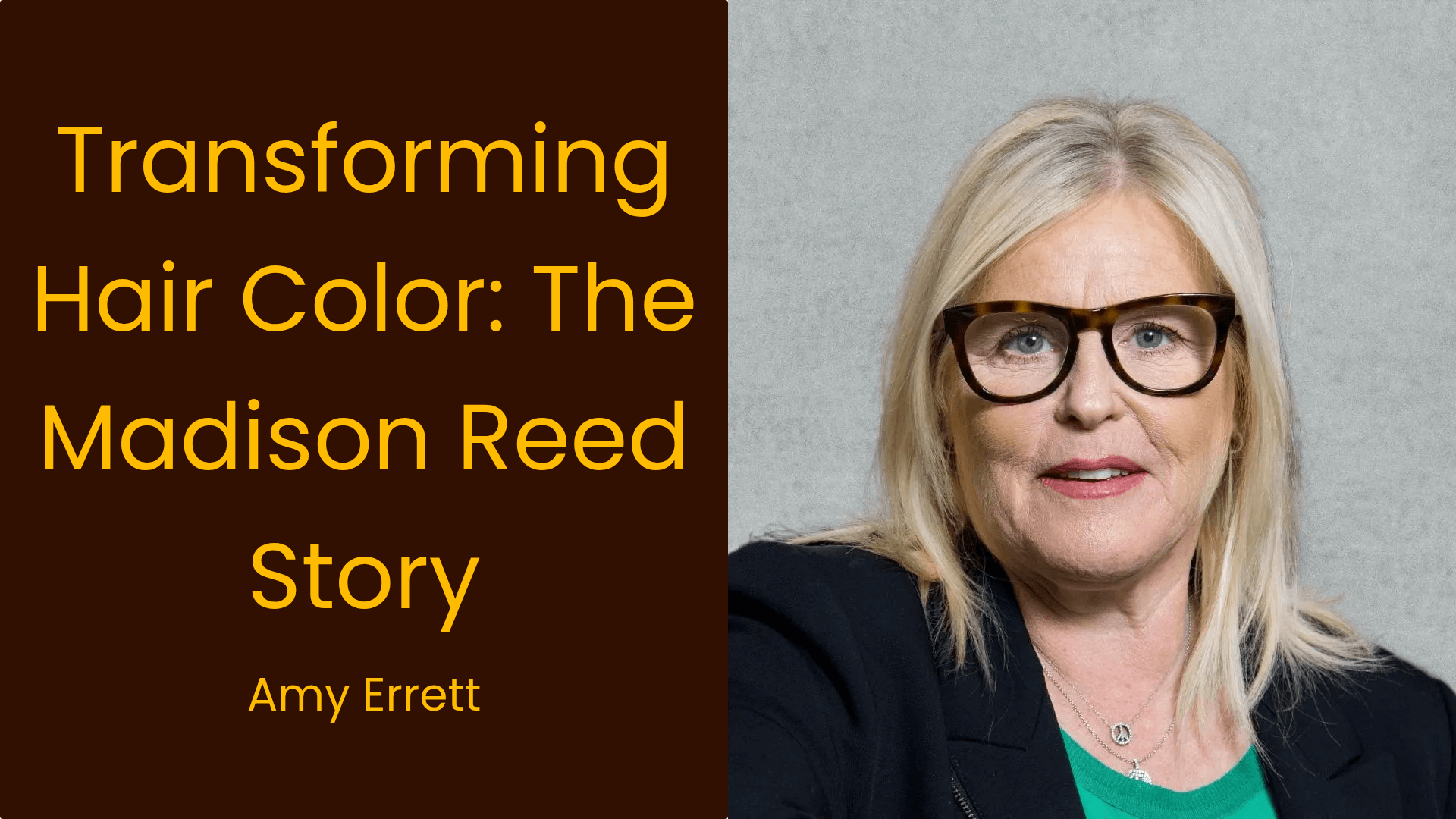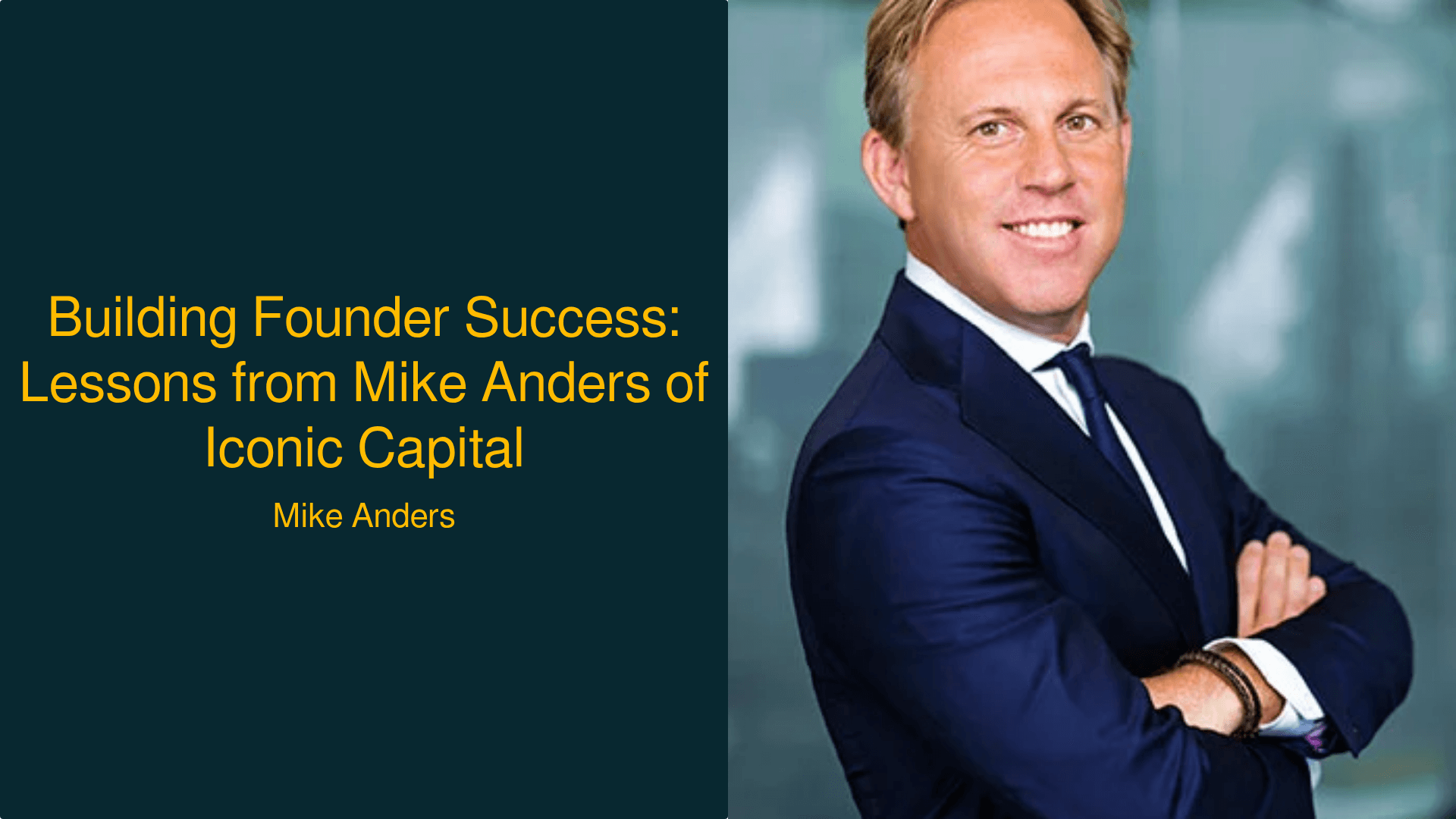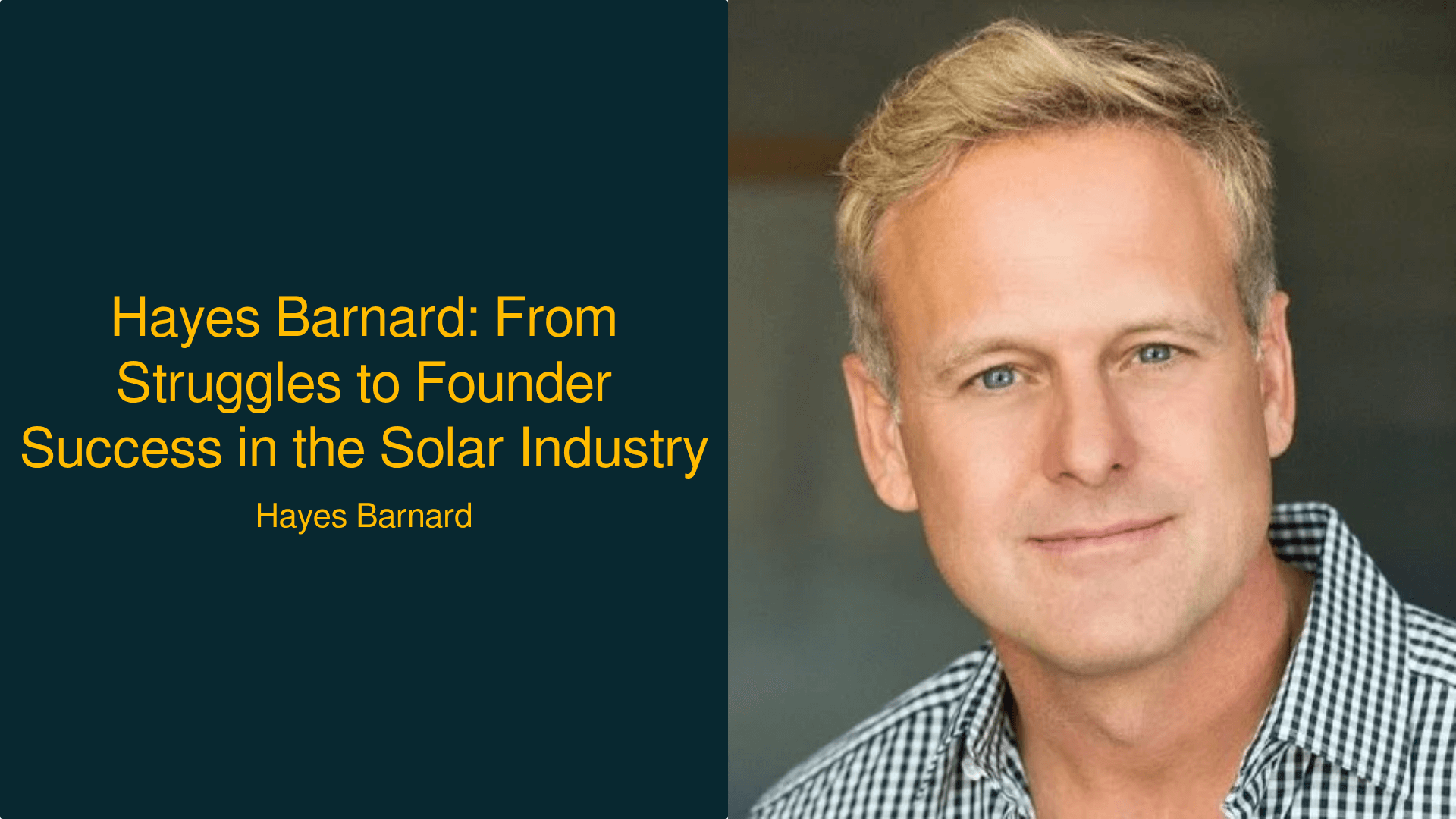Unlocking Founder Success: Amy Errett's Journey with Madison Reed
Discover actionable insights from Amy Errett on building Madison Reed, a hair color brand revolutionizing the industry.

Unlocking Founder Success: Amy Errett’s Journey with Madison Reed
In the world of entrepreneurship, founder success stories often highlight the journey of resilience, innovation, and strategic decision-making. One such inspiring journey is that of Amy Errett, founder of Madison Reed, a brand that is redefining the hair color industry. Amy launched Madison Reed at the age of 56, driven by a desire to create a better at-home hair color experience. This article delves into the key insights, strategies, and frameworks that Amy discussed during her interview, providing actionable takeaways for founders and business leaders seeking to build successful companies. Through her candid sharing of experiences, from navigating co-founder challenges to leveraging technology, Amy’s story is a testament to the power of perseverance and strategic vision in achieving founder success.
The Importance of Resilience in Founder Success
Sometimes shit happens to you. And the key for my life has been a certain amount of resilience and persistence. — Amy Errett
Why it matters: Resilience is a critical trait for founders, as it enables them to navigate the inevitable challenges and setbacks that arise in the entrepreneurial journey. Amy’s experience of being fired from her previous CEO position taught her invaluable lessons about responsibility and the importance of adapting to change. This resilience not only shaped her approach to launching Madison Reed but also influenced her decision-making and leadership style, allowing her to bounce back from adversity and ultimately succeed in her new venture.
How to Cultivate Resilience as a Founder
- Embrace Failure: Acknowledge that failure is a natural part of the entrepreneurial journey and view setbacks as learning opportunities.
- Build a Support Network: Surround yourself with mentors, peers, and advisors who can provide guidance and encouragement during tough times.
- Practice Self-Reflection: Regularly assess your experiences and decisions to identify areas for improvement and personal growth.
- Develop a Growth Mindset: Cultivate a mindset that embraces challenges and believes in the ability to grow and improve through effort and learning.
- Stay Focused on Your Vision: Keep your long-term goals and vision in mind, allowing resilience to drive you toward achieving them despite obstacles.
Navigating Co-Founder Challenges
Four co-founders is too many. And I said, no, it’s not. And boy was he right. — Amy Errett
Why it matters: Amy’s journey with co-founders highlights the complexities of team dynamics in startups. Her initial belief that having multiple co-founders would enhance the business was challenged when she faced significant challenges in aligning their visions and expertise. Understanding the right team structure and dynamics is crucial for any founder, as it can greatly impact the company’s trajectory and growth. Amy’s experience underscores the importance of having the right people in key roles and being willing to make tough decisions for the greater good of the company.
How to Choose the Right Co-Founders
- Assess Complementary Skills: Ensure that co-founders bring diverse and complementary skills to the table, enhancing the team’s overall capabilities.
- Align on Vision and Values: Confirm that all co-founders share a common vision and values for the company, fostering alignment and collaboration.
- Establish Clear Roles and Responsibilities: Define specific roles and responsibilities for each co-founder to avoid overlap and confusion.
- Communicate Openly: Foster an environment of open communication where co-founders can discuss concerns and challenges candidly.
- Be Prepared for Change: Understand that co-founder dynamics may shift as the company grows, and be open to making necessary adjustments.
Leveraging Technology for Competitive Advantage
We are a technology-enabled company. — Amy Errett
Why it matters: Amy recognized early on that technology could be a game-changer for Madison Reed, particularly in personalizing the customer experience. By utilizing data and algorithms to guide customers through the color selection process, Madison Reed has positioned itself as a leader in the beauty industry. This technological approach not only enhances customer satisfaction but also drives retention and repeat purchases, demonstrating the importance of innovation in achieving founder success.
How to Leverage Technology in Your Business
- Identify Customer Pain Points: Understand the challenges your customers face and explore how technology can address those needs.
- Invest in Data Analytics: Utilize data to gain insights into customer preferences and behaviors, informing your product development and marketing strategies.
- Automate Processes: Identify areas where automation can streamline operations and improve efficiency, allowing your team to focus on strategic initiatives.
- Personalize the Customer Experience: Use technology to create personalized interactions that resonate with customers and drive loyalty.
- Stay Ahead of Trends: Continuously monitor technological advancements and industry trends to ensure your business remains competitive and relevant.
Building a Sustainable Brand
I wanted to create a better at-home hair color experience. — Amy Errett
Why it matters: Amy’s commitment to creating a sustainable and high-quality hair color product resonates with consumers who are increasingly conscious of ingredient safety and environmental impact. By positioning Madison Reed as a brand that prioritizes better ingredients and customer satisfaction, Amy has successfully tapped into a growing market segment. This focus on sustainability not only enhances brand loyalty but also aligns with broader consumer trends, making it a crucial element in achieving founder success.
How to Build a Sustainable Brand
- Define Your Brand Values: Clearly articulate the values that will guide your brand’s mission and align with your target audience.
- Source Ethically: Ensure that your products are sourced responsibly and sustainably, appealing to environmentally conscious consumers.
- Communicate Transparently: Share information about your ingredients, sourcing practices, and sustainability efforts with your audience.
- Engage with Your Community: Foster a sense of community around your brand by engaging with customers and addressing their concerns.
- Continuously Improve: Regularly assess your practices and seek opportunities for improvement in sustainability and brand integrity.
The Role of Marketing in Founder Success
We had a big PR and influencer-driven launch. — Amy Errett
Why it matters: Amy’s strategic approach to marketing, particularly through PR and influencer collaborations, played a pivotal role in Madison Reed’s initial success. By leveraging the power of social proof and targeted outreach, she was able to generate buzz and awareness for the brand. This lesson emphasizes the importance of a well-executed marketing strategy in driving founder success and establishing a strong market presence.
How to Develop an Effective Marketing Strategy
- Identify Your Target Audience: Clearly define who your ideal customers are and what channels they engage with.
- Create Compelling Content: Develop content that resonates with your audience and showcases the value of your product or service.
- Utilize Influencer Partnerships: Collaborate with influencers who align with your brand values to reach a wider audience.
- Measure and Optimize: Monitor the performance of your marketing efforts and make data-driven adjustments to improve results.
- Build Community: Foster a sense of community around your brand by engaging with customers and encouraging user-generated content.
Conclusion
Amy Errett’s journey with Madison Reed exemplifies the principles of founder success, showcasing the importance of resilience, strategic decision-making, and leveraging technology to disrupt traditional industries. Through her candid reflections on the challenges faced and the lessons learned, Amy offers valuable insights for founders and entrepreneurs seeking to navigate their own paths to success. As the landscape of entrepreneurship continues to evolve, her story serves as a reminder that with determination, adaptability, and a clear vision, it is possible to create a lasting impact in the business world. For those looking to embark on their own entrepreneurial journeys, Amy’s experiences highlight the significance of surrounding oneself with the right team, embracing innovation, and staying true to one’s values in the pursuit of building a successful company.


